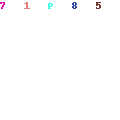 Shopping online has
become a vital phenomenon in the last half a decade in India and there
are quite a large number of eCommerce sites in the scene right now. The
growth of new sites seems never ending and a prospective buyer lands in a
state of dilemma to chose the right site for the right product. I dont
want to include sites offering rail, movie, bus ticket bookings for the
sole reason of comparability. That said, lets go straight to the point
of interest.
Shopping online has
become a vital phenomenon in the last half a decade in India and there
are quite a large number of eCommerce sites in the scene right now. The
growth of new sites seems never ending and a prospective buyer lands in a
state of dilemma to chose the right site for the right product. I dont
want to include sites offering rail, movie, bus ticket bookings for the
sole reason of comparability. That said, lets go straight to the point
of interest.** Alexa rank specified here is for India
Alexa Rank
|
22
|
Pros
|
Cons
|
Discount Coupons
Serviceable Locations
Product catalogue
|
Questionable Genuinity of many products
Delivery period
Site Interface
|
Alexa Rank
|
11*
|
Pros
|
Cons
|
| Price Shipping time | Site appeal Not unique |
8. landmarkonthenet.com

Alexa Rank
|
3836
|
Pros
|
Cons
|
| Minimalistic Interface Price Zero Shipping charges | Poor Customer Care service Tracking of orders |
7. zoomin.com

Alexa Rank
|
1022
|
Pros
|
Cons
|
| Photo books of sheer quality Infinite templates Reasonable price Fluidic interface | Lack of wide range of photography centric products |
6. homeshop18.com

Alexa Rank
|
66
|
Pros
|
Cons
|
| Wide range of products Published brand name | Customer care
Serviceable locations
|
5. indiaplaza.in

Alexa Rank
|
354
|
Pros
|
Cons
|
| Wide range of products Serviceable locations Price | Customer care Not so great looking interface |
4. infibeam.com

Alexa Rank
|
170
|
Pros
|
Cons
|
| Wide range of products Proven service Price | Certainly needs a facelift Lack of publicity |
3. yebhi.com

Alexa Rank
|
101
|
Pros
|
Cons
|
| Gen - Next UI Wide Range of products Price | Clumsy search landing page |
2. myntra.com

Alexa Rank
|
82
|
Pros
|
Cons
|
| Market leader in clothing Availability of almost all brands Lowest Price | Customized tees' flimsy quality Shipping time |
1.flipkart.com

Alexa Rank
|
14
|
Pros
|
Cons
|
| Widest product range Customer care Service Shipping time Self delivery | Serviceable locations Price |


